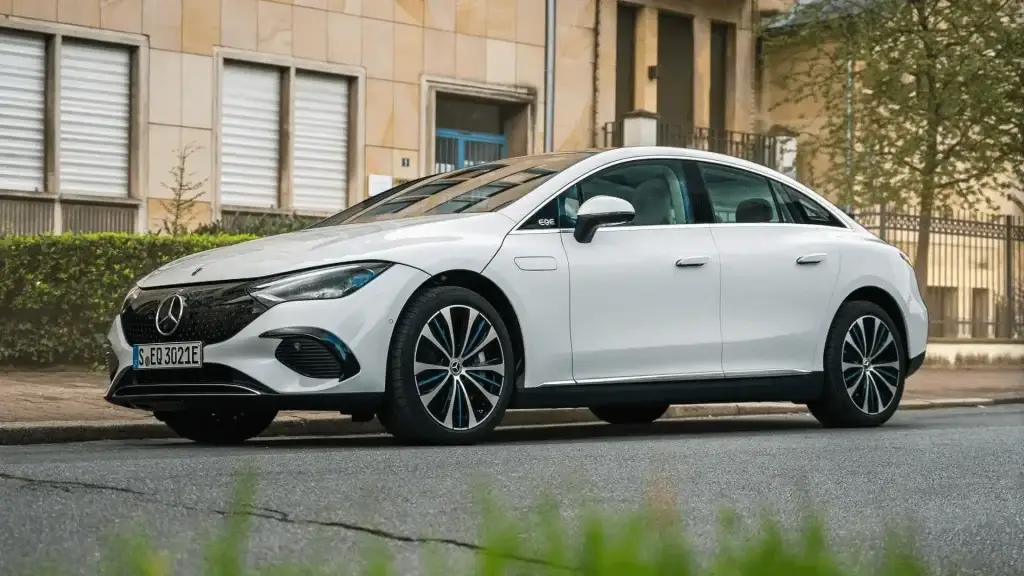Mercedes EQE test drive: a new benchmark for comfort?
Among all premium manufacturers, Mercedes has the most electric models 100% electric models models in its range. The EQ range range was inaugurated in 2019 with the EQC, an electric SUV that struggled to exceed arange of 400 km. In the space of three years, water has flowed under the bridge and the range is now well-stocked with models that, for some, can exceed 600 or even 700 km of range on a single charge.
Mercedes EQAEBQ, EQC, EQS, EQS SUV, EQV- all these models are electric and make up the EQ range from the star-spangled firm, and the latest of the bunch, the EQE, has just hit the dealerships. Overall, the range structure of the EQ models is based on that of the combustion models currently available from Mercedes.
The EQE is the EQS's little sister, just like the E-Class and the S-Class. L'EQE is 27 cm shorter than the EQSbut that doesn't mean it's a small sedan, since its dimensions remain very generous, particularly with its length of 4.95 metres. Mercedes is therefore offering a sedan that's built to eat up kilometers - without a drop of gasoline, of course - and in a few years' time it should definitively take the place of the E-Class.
A little Mercedes EQS with power
Like the E-Class with the S-Class, the EQE is aesthetically inspired by the EQS, and an untrained eye won't be able to tell the difference between the two, apart from the difference in length. The overall design is uncluttered, and before making an angular car, Mercedes focused first and foremost on making its sedan aerodynamic. The contract has been fulfilled, with the German boasting an excellent Cx of 0.20, one of the best in the industry for a production car.
Although more compact than an EQS, the design remains much the same, with very similar on-board technologies, even if the EQS offers more in terms of hierarchy. Unfortunately, the Hyperscreeen dashboard is not available on the "classic" versions, and is only used on the sporty model. Mercedes-AMG EQE 53 for the time being, and as an option at that.
In spite of this, the dashboard is of excellent quality and is a sort of mix between that of a new Mercedes C-Class and an EQS. The atmosphere is highly polished, with quality materials and adjustments. Personalization is the order of the day on board, and searching through the numerous menus on the12.8-inch touchscreentouchscreen, you can choose the colors and ambience on board. Right in front of the driver's eyes, we find a 12.3-inch instrumentation system providing all the information needed for driving.
The MBUX system system takes a little getting used to, and not all technologies are essential, but it's fair to say that the whole package works pretty well, with an AI-enabled voice-recognition system that can learn your habits, and augmented-reality navigation that takes the place of the GPS map when you reach a junction. Graphics are of excellent quality, and menu navigation is fluid. As for the on-board system, it's virtually faultless.
Decent roominess, but nothing more
With its wheelbase of 3.12 metresone of the most generous in the electric sedan segment, the Mercedes EQE offers plenty of space for rear passengers, although this isn't exactly extraordinary for a 5-meter-long sedan. In fact, what's lacking is headroom for tall people, due to the sloping roofline.
As far as the boot is concerned, Mercedes announces only 430 litersthe capacity of a lower-segment sedan. Even the Mercedes C-Class, which is 20 cm smaller, offers 25 liters more. On top of that, the opening is not very practical. not a hatchback, so the opening is rather narrow. The Mercedes EQS, on the other hand, has a tailgate that can accommodate larger objects.
The battery, recharging and consumption
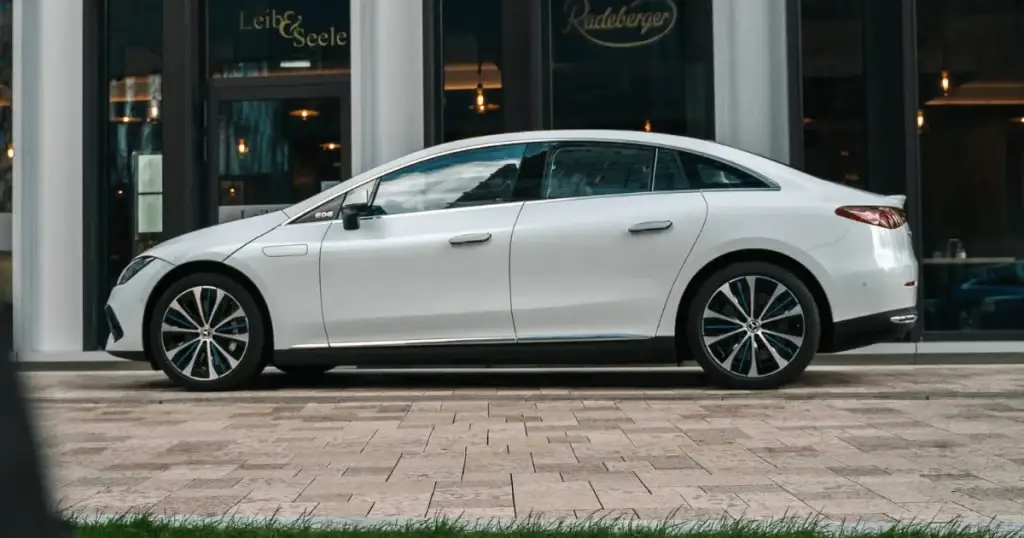
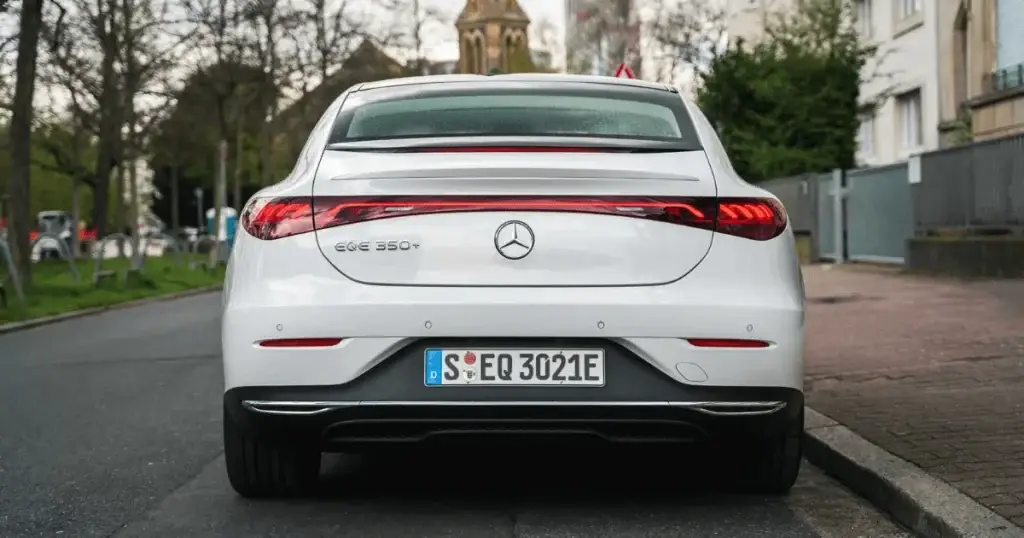
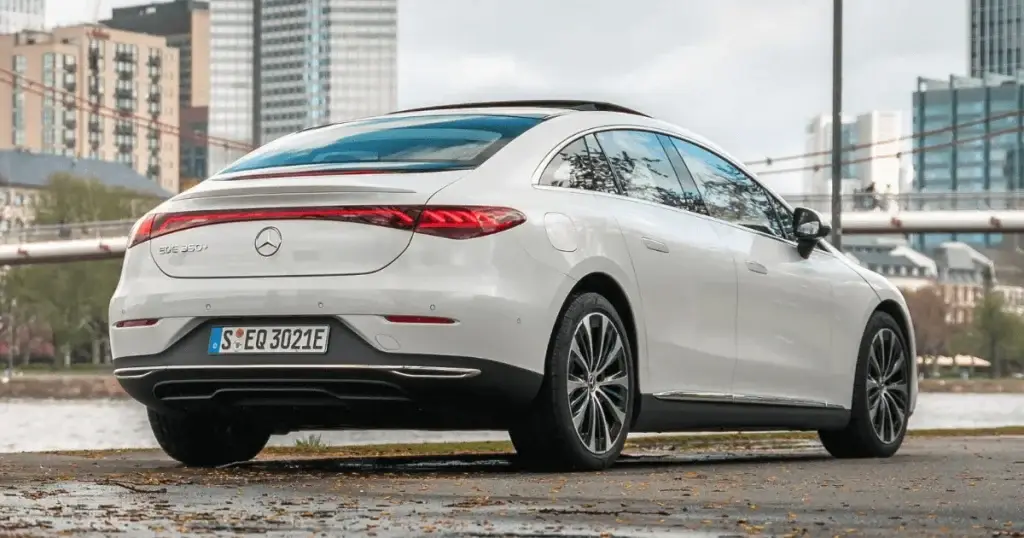
The EQE is the second model based on the 100% electric EVA2 platform platform after the EQS. Later, the EQS SUV and EQE SUV will also benefit from this same platform. It features a 90.5 kWh battery capacity giving it a range of between 567 and 654 km. Consumption figures are attractive, as Mercedes claims between 15.4 to 17.7 kWh/100 km on the WLTP combined cycle. We were able to verify this during our test drive, when we managed to consume around 18 kWh/100 km over a distance of around 400 km. With these fuel consumption figures, we could have driven over 500 km on a single charge, without too many problems. A good point.
For recharging, a trip to a fast terminal capable of delivering 170 kWthe car's maximum charging power, will enable you to go from 10 to 80% in 32 minutes. It will take around 8h15 on an 11 kW AC socket. On the freeway, the most energy-intensive journey for an electric carAt 130 km/h, with air conditioning and a few comfort features, we recorded fuel consumption of just 20 kWh/100 km, enough to cover around 400 km before refueling. All in all, this is very good, and the EQE relies on an on-board route planner that uses GPS data to optimize recharging times. This Mercedes is also equipped with regenerative braking regenerative braking capable of adapting to the road profile to reduce fuel consumption.
To find out more :
More comfortable than dynamic
Comfort is the watchword on board this EQE. It is without doubt one of the most comfortable sedans, if not the best, for an electric car. Suspension is very supple in comfort mode, and only slightly firmer in sport mode. Silence reigns on board, even at high speeds, making long journeys almost enjoyable. Even the variable steering blends consistency and firmness with ease.
Nevertheless, with over 2,300 kilos on the scales, the downside is dynamism. Our 350 test model and its 292 hp are sufficient, but it's clear that performance isn't necessarily what Mercedes is aiming for. With a 0 to 100 km/h in 6.4 secondsthere's not much in the way of dynamism, a role best played by the Mercedes-AMG in 53 and its 687 hp peak power. peak power. This model also features special settings to make it even sportier.
However, the EQE is far from ridiculous in dynamic driving. The steered rear wheels swivel through an angle of 10° (4.5° on models with larger rims), giving it very decent agility when cornering. This technology is particularly useful in town, with an attractive turning radius and appreciable maneuverability for such a large sedan.
When the car is fitted with rear-wheel steering, there's a lot of steering input, which can be surprising. In fact, between the angle you think you're turning and what actually happens with the car, there's sometimes a bit of a discrepancy, and several times we skimmed very close to the kerbs. Be careful not to damage the beautiful 19-inch wheels.
As for braking, as usual with Mercedes, it's excellent, although the transition between regenerative braking and friction braking is strange, with little consistency at the start of the race and a sudden bite mid-race.
The German company has provided several modes of energy recovery when the foot is lifted, which can be adjusted via the paddles behind the steering wheel. Three levels of deceleration are available, while an "intelligent intelligent recovery "based on GPS data.
Pricing and competition for the Mercedes EQE
Hard to believe, but the Mercedes EQE is currently Mercedes' cheapest electric sedan, with a price tag of price of €79,350 for a 300 version in France.. Our 350 test model with "AMG Line" finish AMG Line" trim level retails for 83,250 euros.. A hefty sum, but far more affordable than the sporty sporty 53 version and its 124,100 euros price tag. Fortunately, the fact that it's electric means it doesn't have to pay the weight penalty, or any penalty for that matter. On the other hand, don't expect any environmental bonus given its price, the EQE is well over the 60,000 euro threshold.
What do we have against this EQE? There are no direct competitors, only models that gravitate around it. There's the inevitable Tesla Model Swhich can also compete with the EQS, and which has just returned to France with its "Plaid" version, but this version claims 138,990 euros. But with 1,020 hp and 600 km of range, it seems out of its league. We'll just have to wait for the smaller versions, but they'll be hard pressed to break the 100,000-euro barrier.
BMW's Bavarian neighbor's i4 is more in the lower segment. However, it could be a very good alternative to the EQE for those on a tighter budget, starting at €59,950.
There's also the fearsome Porsche Taycanthe benchmark among electric sports sedans, but with a different philosophy. The entry-level rear-wheel drive version costs 88,364 euros. It offers slightly less range, but is still sportier. At Audi, we'll have to wait a little longer for the arrival of a 100% electric A6, but it's well in the pipeline.
To find out more: Mercedes EQE - technical sheet.
Mercedes EQE test drive: the final word
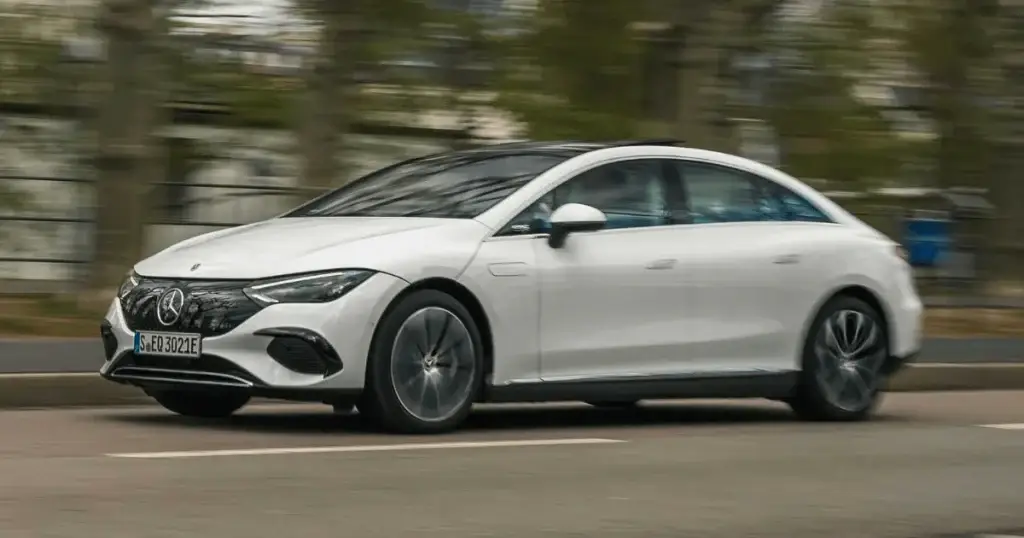
Even with 292 hp under the right pedal, the EQE can't be considered a dynamic sedan. Long journeys are its thing, especially as range is no longer a problem, given that it has a fairly large battery, while the density of the recharging network is now better.
The EQE has little to envy an EQS in terms of comfort and refinement, and apart from a few technologies that aren't really indispensable, one might even ask why choose an EQS instead of an EQE, which is less expensive, almost as livable and, above all, just as comfortable. And for those looking for more space, a larger trunk and almost off-road capability, you'll have to wait a few more months, since Mercedes will shortly be presenting the EQE SUV, a model that will model its range on the sedan, but with an extra level of habitability.
Read also:
